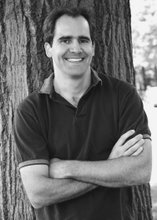This Week's Citation Classic: Joshua Lederberg
 Joshua Lederberg passed away last Saturday. He was truly a giant in microbiology. When I first joined the Department of Ecology and Evolutionary Biology at Yale, I visited the building on a weekend, and having no key, couldn't enter. As I walked around the building looking for an open entrance, I noticed a plaque near the front portal. I forget the exact wording, but in effect it says, "Here, in this building, Joshua Lederberg made his most important discovery, genetic exchange in bacteria, for which he received the Nobel Prize in Physiology and Medicine in 1958." (He was only 33!). With that, I felt great pride and amazement that I would work in the same building (possibly even the same lab!) as one of the greats in my field.
Joshua Lederberg passed away last Saturday. He was truly a giant in microbiology. When I first joined the Department of Ecology and Evolutionary Biology at Yale, I visited the building on a weekend, and having no key, couldn't enter. As I walked around the building looking for an open entrance, I noticed a plaque near the front portal. I forget the exact wording, but in effect it says, "Here, in this building, Joshua Lederberg made his most important discovery, genetic exchange in bacteria, for which he received the Nobel Prize in Physiology and Medicine in 1958." (He was only 33!). With that, I felt great pride and amazement that I would work in the same building (possibly even the same lab!) as one of the greats in my field.
One of Lederberg's most cited papers is: Lederberg, Joshua, E. L. Tatum, "Gene recombination in E. coli", Nature 158 p. 558, October 19, 1946. It was his first published paper. It is very short and only takes up a quarter of a page in Nature.
Its findings, however, were revolutionary. Previously it was unequivocally assumed that bacteria reproduced asexually by binary fission and no genetic exchange or recombination occured. Lederberg and Tatum were able to find evidence that a wild-type bacterium E. coli K-12, lacking the ability to grow on certain media was able to acquire genes that permitted it to grow on that media, when reared with strains that possessed those abilities.
The most important effect of this discovery was that it established bacteria, K-12 in particular, as appropriate organisms to study genetics.
The experiment is described in greater detail on the National Library of Medicine website and I post the relevant section:
[Lederberg] took two of Tatum's double mutants of the K12 strain, each unable to synthesize two different nutrients (the vitamin biotin and the amino acid methionine in the first mutant, the amino acids threonine and proline in the second), to minimize the possibility of reversion to prototrophy, which in double mutants is extremely rare. When he crossed the two double mutants, Lederberg discovered that some of their progeny regained the ability to synthesize the two respective nutrients which previously had to be supplied in the broth for them to grow, and that this ability was inherited by succeeding generations. Such prototrophs were obtained only when the two mutants were mixed, not when single strains were incubated separately. Moreover, all individual bacteria within a colony of recombinants had the same genotype, or genetic constitution. Furthermore, from among the double mutants Lederberg isolated several that in addition to having the nutritional requirements described above were resistant to a bacteriophage, a bacterial virus, that infected E. coli. Resistance to bacteriophage T1 provided a second, so-called unselected genetic marker in this sub-group of nutritional mutants. When Lederberg tested prototrophs for T1 resistance, he found that some were resistant while others remained sensitive to the virus. Most importantly, he was able to demonstrate that the ratio of resistance to sensitivity depended on which parent carried the resistance marker, and that this ratio was reversed in reciprocal crosses (i.e. when instead of parent strain A, parent strain B carried this marker)."
I still use K-12 today, as well as a phage discovered by Lederberg's wife, Esther, phage Lambda.
Photo: Lederberg receiving the Nobel Prize.











I noticed a plaque near the front portal. I forget the exact wording, but in effect it says, "Here, in this building, Joshua Lederberg made his most important discovery, genetic exchange in bacteria, for which he received the Nobel Prize in Physiology and Medicine in 1958."
ReplyDeleteFunny -- I did my undergrad at the University of Wisconsin in Madison, and all the professors claim Lederberg won it for the work he did there (Lederberg did grad school at Yale and was an assistant professor at Madison, bypassing all that postdoc stuff that mere mortals do). I guess everyone wants a piece of him.
Of course just about the first thing Lederberg did when he got the Nobel was leave Madison for Stanford, but...